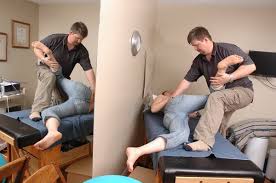By Marty Nemko
Overview. Next to the clergy, physical therapy ranked highest in job satisfaction, according to a survey conducted by the National Opinion Research Center at the University of Chicago
More than three quarters of physical therapists reported being "very satisfied" with their occupation. In a similar survey by the Wall Street Journal's Career Journal, physical therapy rated one of the eight best career
And it's easy to understand why:
You're a one-on-one coach, a role that many people enjoy. It's a bit like a fitness coach but with more skills and you're helping people with more acute problems
You usually see real progress. For example, it's touching to see a patient, who came in on a stretcher or in a wheelchair, walk out at the end of treatment

Unlike physicians, who often are restricted to 12-minute appointments, you typically see a patient for an hour
You have considerable autonomy in how to solve problems, yet, unlike in self-employment, you can get a steady and pretty good paycheck
There's variety: Most physical therapists are generalists. You might treat, for example, a brain-injured child, a football player who broke his arm, amputee, and an aged stroke patient
You can choose from a wide range of work settings, notably hospitals, physical therapy clinics, schools, physicians' offices, and patients' homes
Unlike many other health professionals who must work nights and weekends, you usually have normal work hours

Despite increased use of lower-cost physical therapy assistants, the job market for physical therapists is projected to remain strong as the baby boomers are reaching the age where they get more weekend-warrior athlete injuries and more serious problems
US News